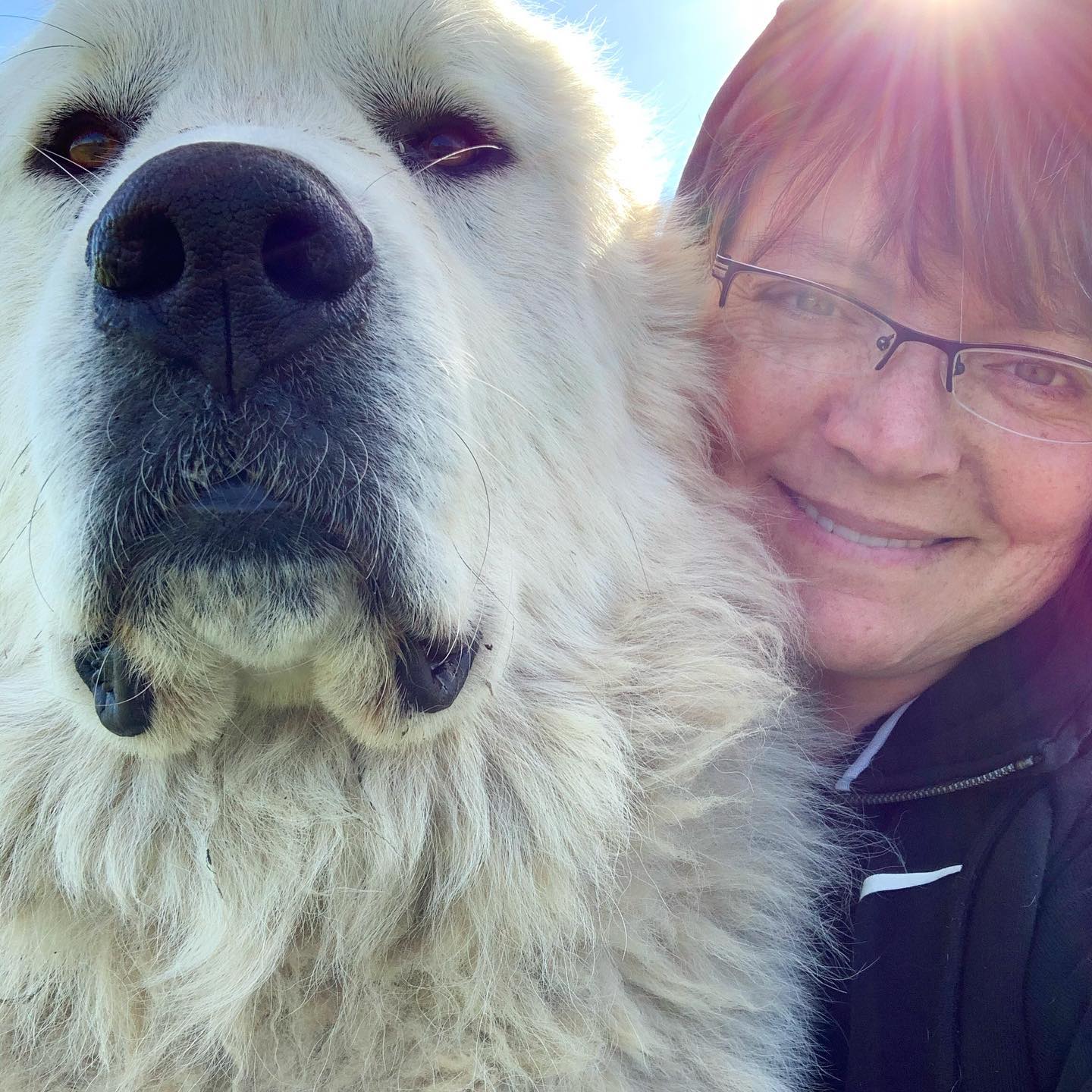By Harper Jones
Spring fever has firmly gripped the farm. Goats, shocked out of winter ennui, worm their way out of the barn and over fences to frolic in the newly green grass. Chickens (maybe spurred on by a recent holiday) leave the coop and take their egg-laying show on the road, hosting perhaps the world’s most challenging egg hunt. Even the cats, usually respectably aloof in the face of change, can be found leaping at blades of grass and sunning themselves in the driveway.
But no one seems happier than our two farm dogs, Archie and Aimee. Now, I’m not much of a dog person. I really just prefer the peaceful coexistence offered by cats over the “your personal space is now my personal space” mentality many dogs have. Despite this, I cannot remain a grouch in the face of two playful puppies. Archie is always looking to play catch with his frisbee and Aimee is happy to get a thorough brushing now that the weather has warmed up a bit. Luckily, both are entertained by a hike, so I can maybe get some of the fur to blow off of me or to finally find that frisbee that got buried in the snow last year.

It was during one of these hikes that I got to thinking about how special the relationship is between our dogs and us humans. It’s easy enough to understand that all dogs descended from wolves, but it seems harder to realize what that actually means and what that process was like. Sure, dogs and wolves both light up that “aww, a puppy!” bulb in your head, but how did we even start to become friends with these adorable, yet still very much wild, animals?
One of the best ways I’ve found to understand this is from a single story outward. Several years ago, researchers in Siberia unearthed a nearly 18,000 year-old puppy from the melting permafrost. This pup was named Dogor, a word meaning “friend” in the local language, and is one of the oldest dogs ever found. Most scientists think that dogs were domesticated sometime around 15,000-40,000 years ago, but the exact moment, if there even is only one, may be impossible to find. Dogor is so old in fact, that his DNA seems to be neither that of a dog and a wolf but instead that of an ancestor to both.
The problem is that change from wolf to dog was gradual, making it hard to know where exactly dogs stopped being wolves. One of my favorite ways that are used to tell the difference is in their teeth, or specifically what is “on” their teeth. You see, dogs can digest grains much better than wolves can. It’s a by-product of them hanging around us humans for so long; you see a dog begging at the dinner table and you give them a bit of your meal, or they’ll just get into your trash when you’re not looking. So, in the distant past, even through wolves and dogs looked identical, dogs just had more plaque on their teeth from all the human food they were eating.
Many of the earliest dogs performed simple jobs, from hunting and guarding, to pulling sleds and just providing companionship. We took our new best friends everywhere we went, traveling as a team over continents and across oceans. The indigenous people who first crossed over to the Americas brought their dogs with them and created new breeds for the jobs they wanted help with, as did those settling in the Alps, in Mongolia, in the Sahel and everywhere else. When we needed a partner to trust with work we could not do alone, dogs were there. All of this, these strong familial bonds, these diverse sizes and shapes and colors of dog, come from long-forgotten, tentative partnerships between individual wolves and humans.
They’re many differences between little Dogor and my dogs, Archie and Aimee. Dogor was probably much more skittish than Aimee and looked a lot more wolf-like than Archie, but they all would have begged at the dinner table and gotten playful in the spring. Maybe Dogor would’ve been as fascinated by shadows as Archie or as protective of her family as Aimee. Even though we’ll never know exactly what the dogs of our ancestors were like, I rather like knowing that we have been friends for millennia.